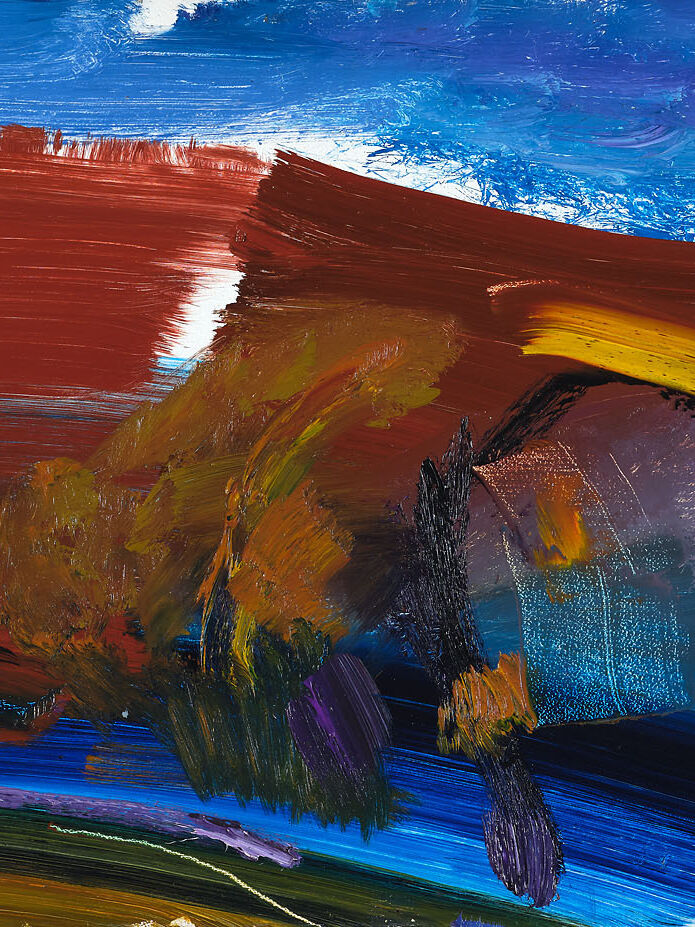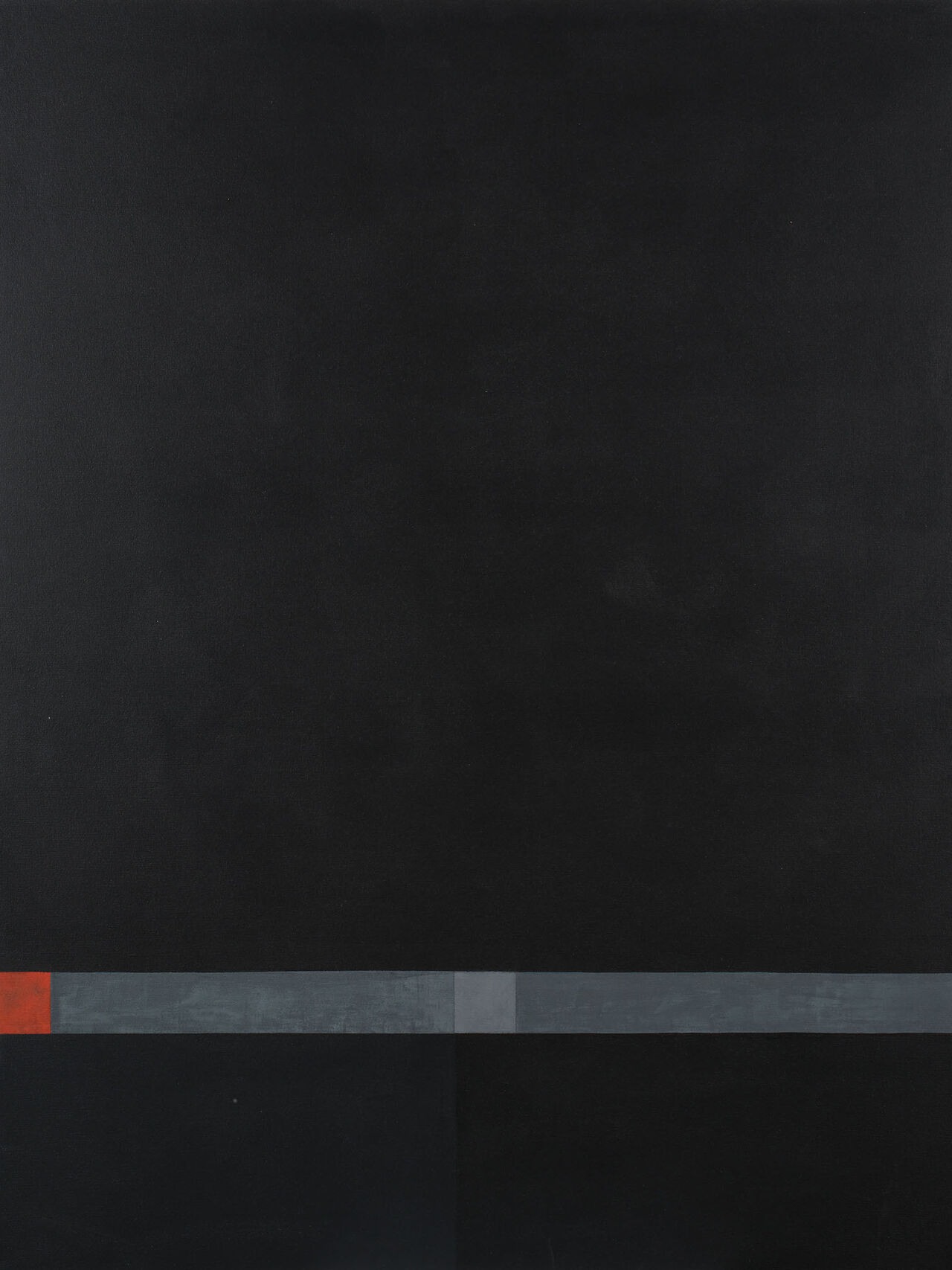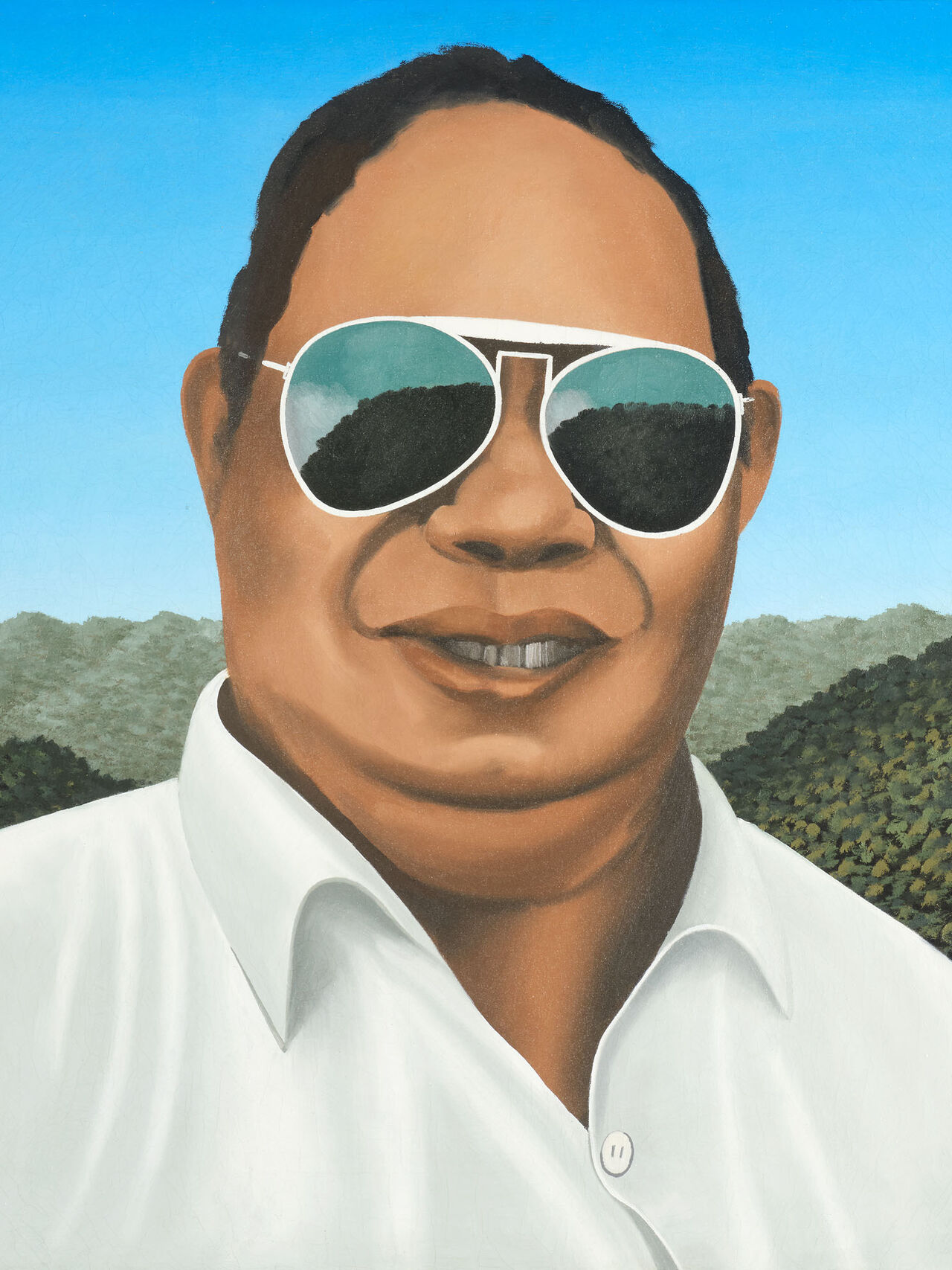Don Binney 'Vanishing Sign I'
Martin Edmond
Essays
Posted on 5 August 2025
In 1971 Don Binney was appointed Visiting Lecturer in Art at Victoria University, Wellington and during that period spent quite a bit of time in and around the Paremata inlet; and visited Mana Island, which he painted several times. Poet Sam Hunt and artist Robin White were both living at Paremata then; it was also the childhood home of historian and writer Michael King. King too, from 1972, was in Wellington; tutoring in Journalism at the Polytechnic. That year his first book, Moko: Maori Tattooing in the 20th Century, based upon interviews with seventy-one women from all over the motu, and illustrated with photographs by Marti Friedlander, was brought out by Alister Taylor. It was unprecedented: ‘a milestone in New Zealand publishing.'

A commission Binney received in these years also involved Michael King. It was from Helen Marcroft, on behalf of the Marcroft Bequest and the Arawa Tribal Trust, and was for a painting in memory of Helen’s husband, Lyndon Harrison Marcroft. Lyndon, of Ngāpuhi descent, was a soldier and an educator; he and Helen are the parents of MP Jenny Marcroft. He died suddenly, of a heart attack, aged only 48, in 1973. This commission was fulfilled in the painting Vanishing Sign II, now in the collection of the Rotorua Museum Te Whare Taonga o Te Arawa. It is illustrated (plate 42) in Damian Skinner’s 2003 book Don Binney: Ngā Manu / Ngā Motu – Birds / Island; and has a dedication, ‘He whakamaharatanga ki a Lyndon Marcroft na Don Binney 1975’, inscribed upon it. Vanishing Sign I is a precursory work which has some similarities with #II, but some differences from it too.
*Drawing by Don Binney on aerogramme sent home from London, 4 May 1973.
The urupā pictured in both paintings is at Utakura in the Hokianga, on the banks of the Utakura River east of the long arm of the harbour and west of Lake Omapere. The distinctive gates, shown in a slightly different form in each painting, were carved by Lyndon Marcroft’s grand uncle. Lyndon was himself born at Utakura but grew up at Ngongatahā, where his father had gone for work; and is buried at Waitetī Marae on the shores of Lake Rotorua. His absence from the Utakura urupā is one of the unspoken themes of the Vanishing Sign paintings.
Both show a scatter of gravestones amongst the long cemetery grass: three in this work, four in the other. There are freestanding crosses in both, and upright stones with patterns inscribed upon them. The landscape behind is broadly similar in the two works, but #I has green bushes either side of the gates, whereas #II shows the tops of fleur-de-lys ornaments on a wrought iron fence. The most significant differences between the two works, however, are those between the moko in the sky. Both use the style called puhoro, where the background is darkened with pigment and the motif is revealed in the unpigmented areas; the one in this work is abstracted into open lines upon the blue; while the moko in #II is more elaborately formed and densely painted. And the mokos are themselves different.
Probably both designs were given to Binney by Michael King, out of the research he had done for his 1972 book. Whether Binney visited Utakura isn’t known but it is very likely that he did. However, this painting was made while he was in England, so it may have been done from memory or from photographs. The title, Vanishing Sign, also suggests a familiarity with the King and Friedlander work, documenting what was then thought, erroneously, to be a form of tattoo that was dying out.
Binney had painted signs in the sky before; mostly, but not always, birds; which may themselves be understood, in certain circumstances, as vanishing signs. He was also a consummate landscape painter, with the ability to give solid form to the whenua in a way that suggests permanence rather than transience; as is the case with the hills and valleys behind the urupā in this work. Don Binney’s connections with the land, and with mana whenua, were deep and abiding and sometimes manifest, as here, in his paintings; but it wasn’t an aspect of his work he foregrounded. Damian Skinner wrote: ‘Binney’s paintings are a special plea for belonging here, made through a gesture of respect for what is already here, without claiming anything that has not been given to him.’
Given the wide range of places Binney travelled and painted―Central America, Hawai’i, Australia, Europe, Africa, the UK―and the consistent concern with ecology and conservation in his oeuvre, the ‘here’ in this quote might be taken to refer, not just to Aotearoa New Zealand, but to the planet as whole. Utakura urupā is thus a window upon the world.


